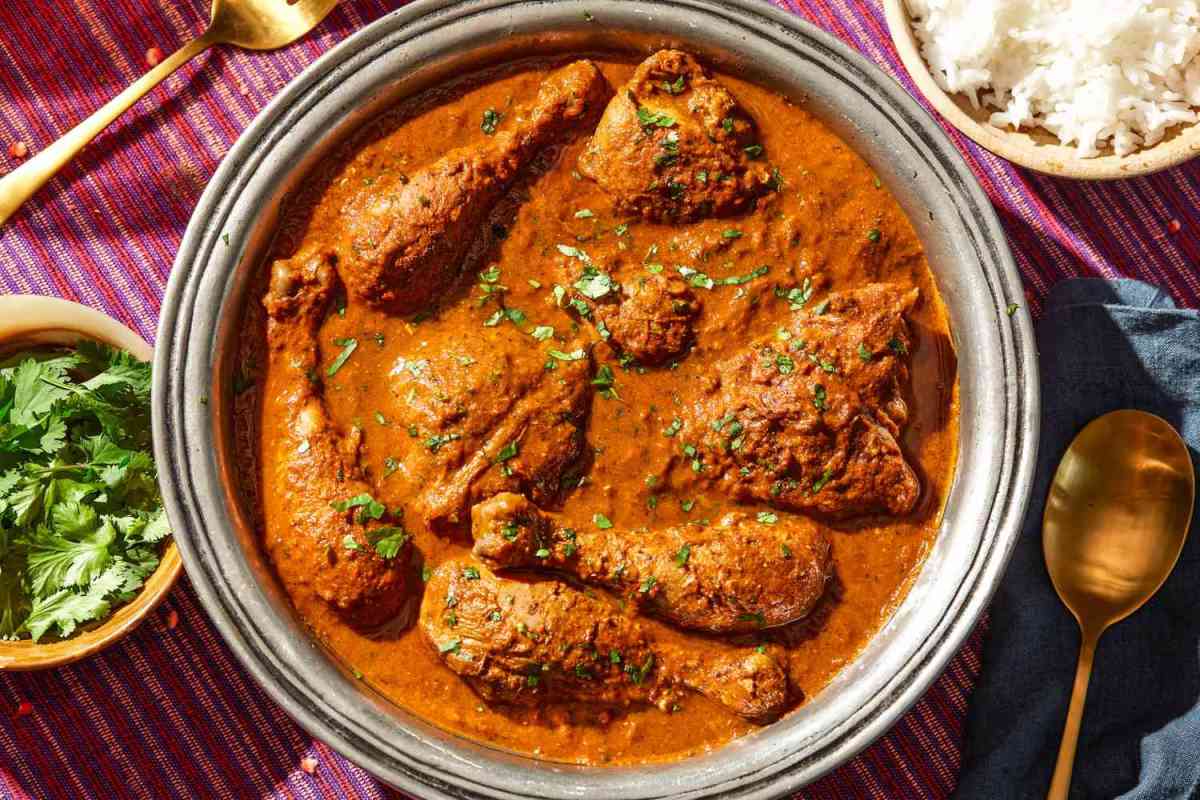Embark on a culinary adventure with vibrant, flavorful curries, meticulously crafted to be both bold and spicy, yet entirely free from common allergens. Imagine the rich aroma of roasted spices filling your kitchen, the satisfying sizzle of onions and garlic in hot oil, the gradual unfolding of complex tastes as layers of flavor meld together. This journey explores three distinct curry recipes – mild, medium, and hot – each designed to tantalize your taste buds while catering to diverse dietary needs. Discover the secrets to creating restaurant-quality allergen-free curries at home, from mastering spice roasting techniques to achieving perfectly balanced flavor profiles. Prepare to transform your dinner table into a celebration of bold, spicy, and allergen-conscious cuisine.
We’ll delve into the art of allergen-free substitutions, exploring clever swaps for common allergens like nuts, dairy, and soy, without compromising on flavor or texture. Learn how to build layers of flavor using unique ingredient combinations and discover the power of aromatic herbs and spices to create a truly unforgettable culinary experience. This guide provides detailed, step-by-step instructions for each recipe, along with serving suggestions that elevate the presentation to a restaurant-worthy level. Whether you’re a seasoned cook or a kitchen novice, this exploration will empower you to confidently create delicious and satisfying allergen-free curries.
Recipe Development
Creating bold and spicy allergen-free curries requires careful selection of ingredients and a nuanced understanding of flavor profiles. The following recipes offer a range of spice levels to suit different palates, all while remaining free from common allergens like gluten, dairy, soy, and nuts. Each recipe prioritizes fresh, vibrant ingredients to create a depth of flavor that is both exciting and satisfying.
Mild Coconut Curry with Chicken
This recipe uses a gentle blend of spices to create a creamy, comforting curry. The coconut milk provides a rich base, while the addition of fresh cilantro brightens the overall flavor profile. The mild spice level makes it suitable for those new to bolder curry flavors or those with sensitivities to heat.
Ingredients: 1 lb boneless, skinless chicken breasts, cut into 1-inch cubes; 1 tbsp coconut oil; 1 large onion, chopped; 2 cloves garlic, minced; 1 inch ginger, grated; 1 red bell pepper, chopped; 1 (14.5 oz) can full-fat coconut milk; 1 tsp turmeric; 1/2 tsp cumin; 1/4 tsp coriander; 1/4 tsp cayenne pepper (optional); Salt and pepper to taste; 1/4 cup chopped fresh cilantro.
Preparation: Heat coconut oil in a large pot or Dutch oven over medium heat. Add chicken and cook until browned on all sides. Add onion and cook until softened, about 5 minutes. Stir in garlic and ginger and cook for another minute until fragrant. Add bell pepper, coconut milk, turmeric, cumin, coriander, and cayenne pepper (if using). Bring to a simmer, reduce heat, and cook for 15-20 minutes, or until chicken is cooked through and sauce has thickened slightly. Season with salt and pepper to taste. Garnish with fresh cilantro before serving. The resulting curry boasts a vibrant orange hue from the turmeric, with tender chicken pieces nestled in a creamy, fragrant sauce.
Medium Spiced Lamb Curry with Sweet Potatoes
This curry offers a more assertive spice profile, balancing warmth with sweetness. The lamb provides a rich, savory element, while the sweet potatoes add a delightful counterpoint to the spices. The medium heat level provides a satisfying kick without being overwhelming.
Ingredients: 1 lb boneless lamb shoulder, cut into 1-inch cubes; 1 tbsp coconut oil; 1 large onion, chopped; 2 cloves garlic, minced; 1 inch ginger, grated; 1 large sweet potato, peeled and cubed; 1 (14.5 oz) can full-fat coconut milk; 1 tsp garam masala; 1 tsp ground cumin; 1/2 tsp chili powder; 1/4 tsp turmeric; Salt and pepper to taste; 1/4 cup chopped fresh cilantro.
Preparation: Heat coconut oil in a large pot or Dutch oven over medium-high heat. Brown lamb cubes on all sides. Add onion and cook until softened. Stir in garlic and ginger, and cook until fragrant. Add sweet potatoes, coconut milk, garam masala, cumin, chili powder, and turmeric. Bring to a simmer, reduce heat, and cook for 30-40 minutes, or until lamb is tender and sweet potatoes are cooked through. Season with salt and pepper to taste. Garnish with fresh cilantro. The finished curry displays a rich, deep brown color from the lamb and spices, with tender chunks of sweet potato adding visual appeal.
Hot Goan-Style Shrimp Curry
This fiery curry showcases the bold flavors of Goan cuisine. The shrimp cooks quickly, retaining its tenderness, while the vibrant spices create a complex and intensely flavorful dish. This recipe is for those who enjoy a significant amount of heat.
Ingredients: 1 lb shrimp, peeled and deveined; 1 tbsp coconut oil; 1 large onion, chopped; 2 cloves garlic, minced; 1 inch ginger, grated; 1-2 green chilies, finely chopped; 1 (14.5 oz) can full-fat coconut milk; 2 tbsp Goan curry powder; 1 tsp turmeric; 1/2 tsp mustard seeds; Salt and pepper to taste; 1/4 cup chopped fresh cilantro; 2 tbsp tamarind paste.
Preparation: Heat coconut oil in a large pan or wok over medium-high heat. Add mustard seeds and let them splutter. Add onion and cook until softened. Stir in garlic, ginger, and green chilies, cooking until fragrant. Add shrimp and cook for 2-3 minutes until pink. Stir in coconut milk, Goan curry powder, turmeric, and tamarind paste. Bring to a simmer, reduce heat, and cook for 5-7 minutes, or until sauce has thickened slightly. Season with salt and pepper to taste. Garnish with fresh cilantro. The finished curry is a vibrant reddish-orange, showcasing the intensity of the Goan spices, with plump, pink shrimp adding a textural contrast.
Curry Recipe Comparison
| Recipe | Key Ingredients | Spice Level | Preparation Time |
|---|---|---|---|
| Mild Coconut Curry with Chicken | Chicken, Coconut Milk, Turmeric, Cumin, Coriander | Mild | 30-35 minutes |
| Medium Spiced Lamb Curry with Sweet Potatoes | Lamb, Sweet Potatoes, Coconut Milk, Garam Masala, Chili Powder | Medium | 45-55 minutes |
| Hot Goan-Style Shrimp Curry | Shrimp, Coconut Milk, Goan Curry Powder, Green Chilies, Tamarind Paste | Hot | 20-25 minutes |
Serving Suggestions & Presentation

Transforming your allergen-free curries from a simple weeknight meal into a captivating culinary experience hinges on thoughtful serving suggestions and elegant presentation. The right accompaniments and a touch of visual flair can elevate the dining experience, making even the most familiar flavors feel exciting and new. Consider these suggestions to enhance your curry’s appeal and create a truly memorable meal.
Serving Suggestions
Careful consideration of accompanying dishes can significantly impact the overall enjoyment of your allergen-free curries. The following suggestions offer a balance of textures and flavors, ensuring a complete and satisfying dining experience.
| Serving Suggestion | Description | Image Description |
|---|---|---|
| Coconut Curry with Basmati Rice and Lime | A vibrant, creamy coconut curry, gently spiced and rich in flavor, served over a bed of fluffy, fragrant basmati rice. The rice’s pearly white perfectly complements the curry’s golden hue. | A shallow bowl holds a generous portion of a rich, golden-yellow coconut curry. Nestled within the curry are tender pieces of chicken or vegetables (depending on the recipe). The curry is served atop a mound of fluffy, pearly white basmati rice. A few sprigs of bright green cilantro are scattered across the top, and a thin wedge of lime rests beside the bowl, its vibrant yellow-green skin contrasting beautifully with the warm tones of the curry and rice. The steam rising gently from the dish hints at its warmth and delicious aroma. |
| Spicy Tomato Curry with Naan Bread | A fiery tomato-based curry, bursting with aromatic spices and a pleasant kick of heat, is served alongside soft, warm naan bread. The naan’s slightly charred edges and puffy texture provide a delightful textural contrast to the curry’s smooth consistency. | A rustic, shallow clay bowl overflows with a rich, deep red tomato-based curry. Visible within are chunks of tender vegetables and possibly paneer (Indian cheese), simmered to perfection. Beside the bowl, a stack of three warm naan breads are arranged. Their golden-brown surfaces are slightly charred in places, and they appear soft and pillowy. A small dish of cooling raita (yogurt-based condiment) is placed nearby, its white color providing a stark contrast to the fiery red of the curry. |
| Mild Vegetable Curry with Quinoa Salad and Toasted Almonds | A delicately spiced vegetable curry, featuring a medley of colorful vegetables, is paired with a refreshing quinoa salad. The salad, studded with toasted almonds and a light vinaigrette, adds a delightful crunch and a touch of acidity to balance the richness of the curry. | A white bowl contains a vibrant, colorful vegetable curry, featuring various shades of green, orange, and yellow from the different vegetables. The curry is served alongside a small bowl of quinoa salad. The quinoa is a light beige color, interspersed with finely chopped vegetables, including perhaps red bell peppers, cucumbers, and herbs. Toasted almonds are scattered across the salad, adding a hint of brown and a textural contrast. A light, golden vinaigrette lightly coats the salad. |
Elevating Presentation
Transforming your home-cooked meal into a restaurant-quality experience involves attention to detail in presentation. Using attractive serving dishes, carefully arranging the food, and adding simple garnishes can significantly enhance the visual appeal of your allergen-free curries.
Consider using vibrant, colorful bowls and plates that complement the colors of your curry. A sprinkle of fresh cilantro, a squeeze of lime, or a dollop of plain yogurt can add both visual interest and a burst of flavor. Serving your curry in individual portions adds a touch of elegance, while arranging the accompaniments artfully on the plate creates a balanced and visually appealing presentation. Finally, setting the table with a clean tablecloth and appropriate cutlery completes the restaurant-like ambiance. A simple candle adds a warm and inviting touch.
Recipe Adaptation & Customization
Creating bold and spicy allergen-free curries doesn’t mean sacrificing flavor or dietary needs. These recipes are designed to be adaptable, allowing you to easily customize them to fit a wide range of preferences and restrictions. Whether you’re vegan, vegetarian, following a low-sodium diet, or simply prefer a milder or spicier curry, the following adjustments will guide you to culinary success.
Adapting these recipes involves thoughtful substitution and mindful adjustments to ensure both flavor and dietary compliance. Understanding the role of each ingredient allows for seamless modifications, maintaining the integrity of the dish while catering to individual requirements. For instance, coconut milk provides richness and creaminess, while spices deliver a complex flavor profile and heat. These elements can be adjusted to achieve a desired outcome.
Adapting for Vegan and Vegetarian Diets
Many of the original recipes are already naturally vegetarian, relying on vegetables, legumes, and flavorful spices as their base. To make them fully vegan, simply ensure that any potential non-vegan ingredients, such as fish sauce or dairy-based yogurt, are omitted or replaced with suitable vegan alternatives. For example, fish sauce can be replaced with soy sauce or tamari, and coconut yogurt provides a delicious creamy alternative to dairy yogurt. The rich textures and depth of flavor inherent in the original recipes readily lend themselves to vegan adaptation. Imagine a vibrant vegan chickpea curry, brimming with vibrant spices and the comforting creaminess of coconut milk, a testament to the adaptability of these recipes.
Adjusting Spice Levels
The beauty of curry lies in its customizable spice profile. To gradually increase the heat, start by adding a small amount of chili powder or a single finely chopped chili pepper. Taste and adjust accordingly. Fresh chilies offer a brighter, more vibrant heat than dried chili powder. For a more nuanced approach, explore different chili varieties, each offering a unique flavor profile alongside its heat. For instance, a touch of cayenne pepper adds a sharp heat, while chipotle peppers contribute a smoky depth. Conversely, to reduce the heat, simply use less chili powder or omit the chilies altogether. Remember, you can always add more spice, but it’s harder to remove it.
Creating a Customized Allergen-Free Curry
Let’s embark on a step-by-step guide to creating a personalized allergen-free curry.
- Identify Dietary Needs and Preferences: Begin by noting all dietary restrictions (allergies, veganism, vegetarianism, low-sodium, etc.) and preferred spice levels. Consider desired protein sources (tofu, chickpeas, lentils, etc.) and preferred vegetables.
- Select a Base Recipe: Choose a recipe from the collection that aligns with your desired flavor profile (e.g., a coconut-based curry for richness, a tomato-based curry for tanginess).
- Substitute Ingredients: Replace any ingredients that conflict with your dietary needs. For example, replace coconut milk with almond milk for those with coconut allergies. Use tamari instead of soy sauce for gluten-free diets.
- Adjust Spice Levels: Add spices gradually, tasting frequently to achieve your preferred heat level. Remember to start with a small amount and add more as needed.
- Add Personal Touches: Incorporate your favorite vegetables, herbs, or protein sources to create a unique and personalized curry. Experiment with different textures and flavors to find your perfect combination.
- Document Your Recipe: Once you’ve created your perfect curry, carefully record the ingredients and quantities used to recreate it in the future. This creates your unique customized recipe.
Low-Sodium Adaptations
For low-sodium diets, reduce or omit added salt entirely. Rely on the natural flavors of the spices and vegetables to build a flavorful profile. Consider using herbs and spices liberally to enhance the taste without relying on salt. Many spices, such as cumin, coriander, and turmeric, possess inherent savory notes that can compensate for the absence of salt. Additionally, lemon juice or lime juice can add brightness and acidity, further enhancing the overall taste. Remember to check the sodium content of any pre-made spice blends or sauces you use.
From the initial sizzle of aromatics to the final, satisfying spoonful, creating bold and spicy allergen-free curries is a rewarding culinary journey. This guide has equipped you with the knowledge and techniques to confidently navigate the world of allergen-free cooking, crafting customized curries tailored to your preferences and dietary needs. The vibrant colors, tantalizing aromas, and complex flavor profiles of these curries will transform your dinner table into a celebration of delicious and inclusive cuisine. So, gather your ingredients, embrace the adventure, and savor the incredible results. The world of bold, spicy, and allergen-free curries awaits!
Questions and Answers
Can I adjust the spice level further beyond the mild, medium, and hot options provided?
Absolutely! You can easily adjust spice levels by adding more chili powder, cayenne pepper, or fresh chilies to increase heat, or by reducing the amount for a milder flavor. Start with small additions and taste as you go.
How long can I store leftover curry?
Leftover curry can be stored in an airtight container in the refrigerator for up to 3-4 days. Allow it to cool completely before refrigerating.
What are some good substitutes for coconut milk if I have an allergy?
Cashew cream, full-fat coconut milk (ensure it doesn’t contain any added allergens), or even a combination of vegetable broth and a touch of cream (if dairy-free cream is used) can work well as substitutes for coconut milk, depending on the recipe.
Can I freeze these curries?
Yes, these curries freeze well. Allow them to cool completely, then portion them into freezer-safe containers or bags. They can be stored in the freezer for up to 2-3 months.


